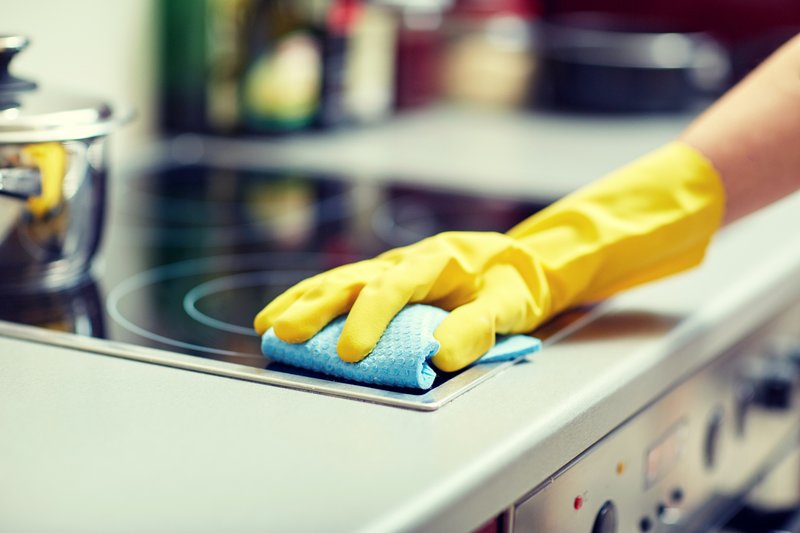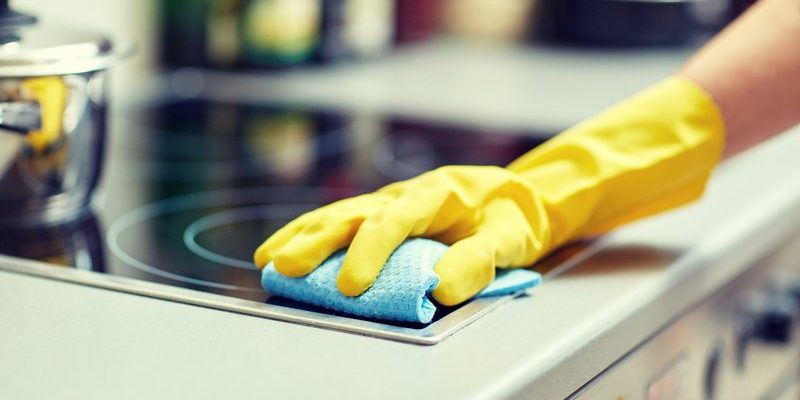
If you’re wondering why that stain won’t come off, you’re not alone. The threshold—whether it’s aluminum, brass, or stainless steel—collects everything the weather and your shoes leave behind. The good news? With a little know-how (and some elbow grease), you can bring back that shiny, just-installed look. Whether your threshold is part of a brand like Pemko or a simple universal design, the cleaning process is pretty much the same. Here’s how to tackle those stubborn stains and keep your entryway spotless.
Why Stains Build Up On Metal Door Thresholds
Every time someone crosses your doorway, that threshold takes a hit. Dirt, water, salt from winter boots, and even the oils from your shoes can leave marks. Over weeks and months, this grime gets pressed into the metal, settling into the tiny grooves and textures. The thing about metal is, it’s tough—but it’s not invincible. If you’ve noticed stains that seem “baked in,” weather could also be to blame.
Humidity, rain, and snow can all speed up corrosion or leave water spots. In some climates, salty air (or winter de-icing salt) can leave a crusty residue that’s surprisingly stubborn. It’s not just about looks, either—let those stains sit too long and they can turn into rust or even start to corrode the threshold.
Here’s the thing: not all stains are created equal. Some are greasy fingerprints from hands or pets, some are mineral deposits from water, and others are straight-up rust. Knowing what you’re dealing with helps you pick the right cleaning method. The type of metal matters, too. Aluminum can get dull and pitted, while stainless steel might just look cloudy. A Pemko or other branded threshold might have a finish that needs a gentler touch than, say, a no-name, universal part.
Gather The Right Supplies Before You Start
Before you dive in with cleaners and scrub brushes, take a minute to gather your supplies. Trust me—having everything at arm’s reach makes the job smoother and less messy. You don’t need fancy products, but some basics are non-negotiable.
- Soft-bristled brush (an old toothbrush works wonders for grooves)
- Microfiber cloths (for wiping and drying)
- Dish soap (gentle, removes oils and light grime)
- Baking soda (for scrubbing power)
- White vinegar (helps dissolve hard water stains and mineral deposits)
- Rubber gloves (for sensitive skin or if using stronger cleaners)
- Optional: Metal polish or a dedicated rust remover for severe stains
Honestly, half the battle is just using the right tool for the right job. A harsh scourer can scratch the finish and make future stains worse. Most brand-name thresholds, like those from Pemko, warn against steel wool or aggressive scrubbing pads. So, stick to brushes and cloths unless you’re dealing with serious corrosion.
Step-By-Step: Removing Everyday Grime And Surface Stains
If your threshold just looks dingy or has a build-up of everyday dirt, start simple. Here’s a step-by-step method that works nearly every time, no matter the brand or type of metal:
- Sweep or vacuum around the threshold. Get rid of loose dirt, sand, or pebbles before you add any water—otherwise, you’ll end up rubbing grit into the metal.
- Mix warm water and dish soap. Dip your microfiber cloth or soft brush in the solution. Gently scrub along the threshold, making sure to get into any grooves or ridges.
- Rinse with clean water. Wipe away suds with another damp cloth. Any leftover soap can leave a cloudy film.
- Dry thoroughly. This helps prevent water spots and slows down any risk of rust, especially if your threshold is aluminum or steel.
If that did the trick, great—you’re done! But if you’re staring at marks that didn’t budge, it’s time for plan B.
Tackling Tough Stains: Baking Soda And Vinegar Method
Here’s where things get interesting. For stains that laugh in the face of soap and water, you need a bit of chemistry—but still nothing fancy. Baking soda and vinegar are pantry staples that, when combined, create a fizzy, gentle cleaner perfect for metal door thresholds.
- Sprinkle baking soda directly onto the stubborn stain.
- Spray or dab white vinegar over the top. It’ll bubble, which can help lift out mineral deposits or grease.
- Let it sit for 5–10 minutes. The chemical reaction does the heavy lifting.
- Scrub gently with your soft-bristled brush. Move in circles and don’t press too hard. Focus on stained areas.
- Rinse and dry. Wipe away all residue with a clean, damp cloth, and finish with a dry one.
You might be wondering, “Will this hurt my threshold’s finish?” As long as you’re using gentle tools and not leaving the paste for hours, you’re safe. Big name brands—Pemko, for example—design their thresholds to handle the occasional deep clean. Just avoid leaving acid (like vinegar) sitting for too long, especially if your product has a protective clear coat.
Dealing With Rust Or Corrosion On Metal Thresholds
Sometimes, you’ll find orange or reddish spots creeping across your threshold. That’s rust, and it’s a little more stubborn. If your entryway faces a lot of rain or gets hit with de-icing salts, rust can sneak up even on “rust-proof” metals.
Here’s how to handle light rust spots:
- Make a paste: Mix baking soda and a little water until it’s thick enough to stick to the rust.
- Apply and let sit for 15–20 minutes. This gives the baking soda time to break down the corrosion.
- Scrub gently with your toothbrush or brush. For severe cases, use a non-abrasive scouring pad—but stay away from steel wool.
- Rinse and dry completely. Any leftover moisture can actually trigger more rust.
For larger or older rust patches, you might need a dedicated rust remover, but always check the label. Many of these are safe on Pemko and other branded thresholds, but test on a small spot first.
If you see deep pitting or holes, that’s a sign your threshold might need replacing, not just cleaning.
How To Prevent Stains From Coming Back
Honestly, keeping your metal door threshold clean is a lot easier than bringing it back from the brink. A few quick habits can save you a lot of scrubbing in the long run.
- Wipe down the threshold once a week, especially after storms or when you track in mud.
- Apply a thin layer of metal polish or car wax every few months. This helps repel water and dirt. Just make sure the product is safe for your specific threshold (check the Pemko or brand manual if you’re not sure).
- Keep entry rugs in place to catch most of the dirt before it hits the threshold.
- Address small stains or rust early. The faster you respond, the less damage you’ll see over time.
If your area gets a lot of salt (from snow or ocean air), check and clean more often. Salt is tough on metal, even if it’s labeled “rust-proof.”
Comparing Threshold Materials: What Cleans Up Best?
Not all metal thresholds are created equal. You might notice that some clean up with just a wipe, while others seem to hold onto stains. Here’s a quick comparison to help you know what to expect:
| Aluminum | Lightweight, popular, but prone to dullness and pitting. Cleans easily but can scratch, so always use non-abrasive tools. |
| Stainless Steel | Resists rust, wipes clean, but shows water spots. Great for high-traffic areas. Can handle mild acids like vinegar. |
| Brass | Has a warmer look and is durable, but tarnishes easily. Requires specialized polish for best results. |
Universal thresholds (the kind you buy as replacements) may use cheaper alloys that are less resistant to corrosion. Branded models from companies like Pemko are often a bit tougher and keep their finish longer if you care for them properly.
When To Call In A Professional (Or Replace The Threshold)
Sometimes, despite all your best efforts, a stain just won’t come off. If you see deep pitting, large areas of rust, or flaking metal, cleaning won’t fix the underlying issue. At that point, it might be time to think about repair or replacement.
Professionals can re-finish or even swap out your threshold, giving your doorway a fresh start. This is especially helpful if your door is drafty or doesn’t close right anymore, since the threshold affects both looks and function. Honestly, if you’re spending hours scrubbing and nothing changes, your time might be better spent upgrading instead.
Bringing Your Metal Door Threshold Back To Life
Cleaning stubborn stains from a metal door threshold isn’t rocket science, but it does call for the right approach. The combination of soap, baking soda, and a little patience can tackle almost anything—from salt crust to muddy footprints or even minor rust. Just remember: the sooner you act on a stain, the easier it is to remove. Keeping a Pemko, universal, or any brand threshold looking sharp takes only a bit of upkeep and the right cleaning habits.
The bottom line? A clean threshold makes your whole entryway feel more inviting—something both you and your guests will notice. Regular care means less grime, fewer stains, and a longer life for your threshold. So next time you spot a stubborn mark, you’ll know exactly what to do—and it won’t feel like such a big deal.
